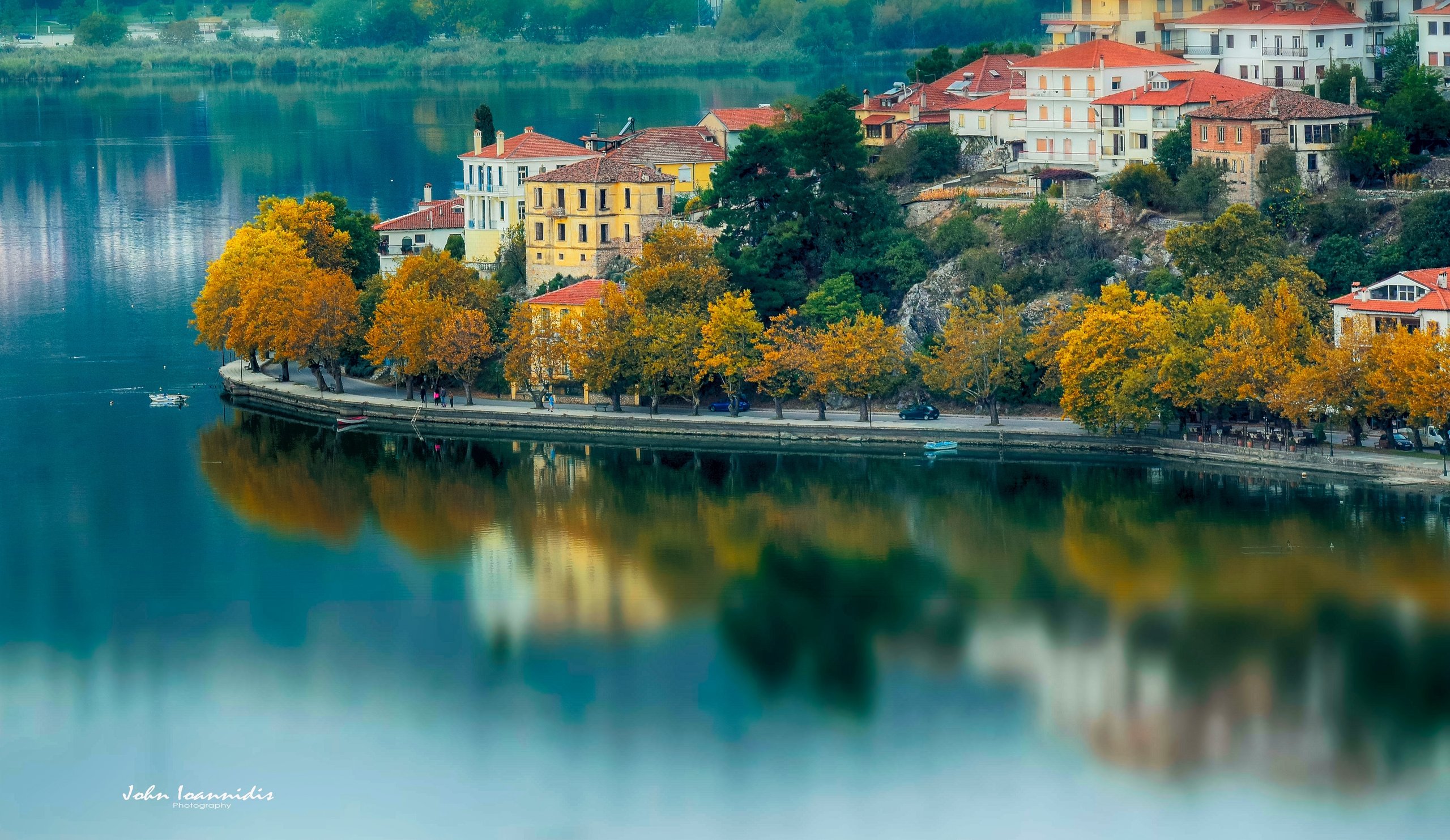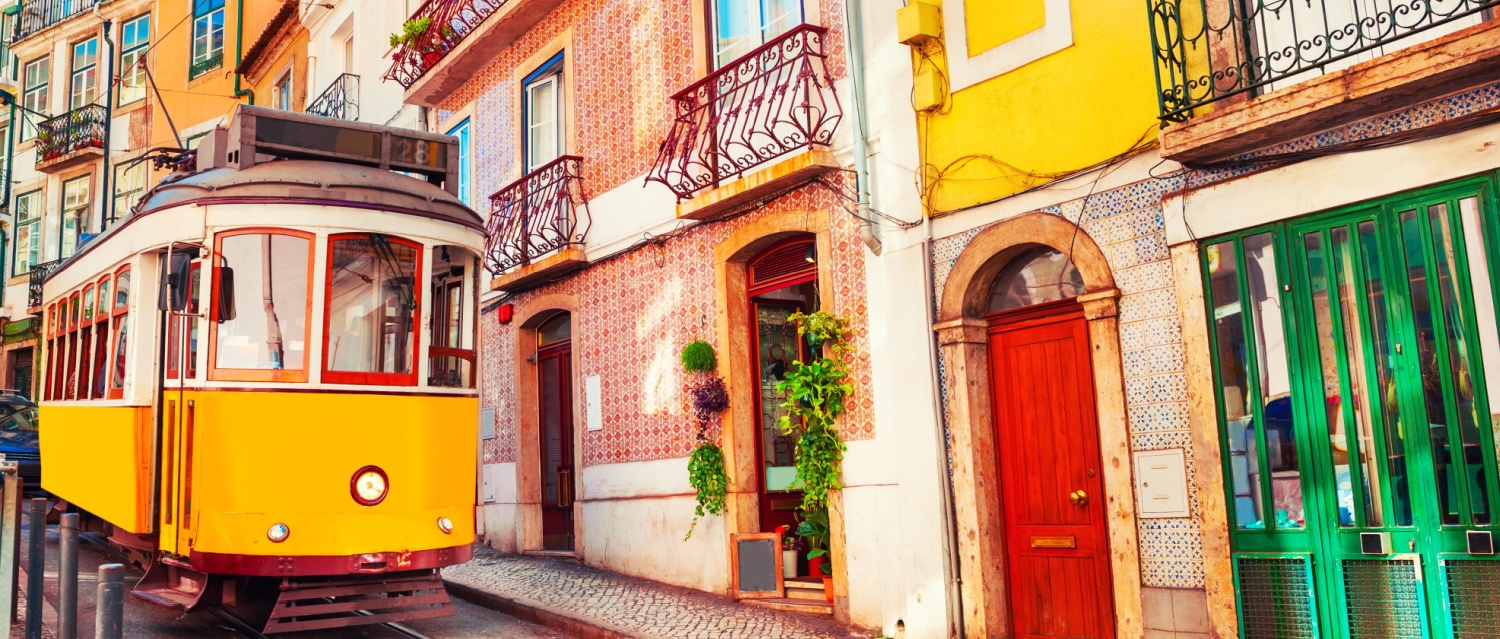Getting around Portugal is often easier than buyers imagine. Whether you’re exploring sleepy inland villages or jumping between Lisbon and Porto, the country’s roads, rails and runways are generally up to modern standards – with a few quirks to navigate. It’s why you need to read up on transport in Portugal.
It’s a country where car ownership often makes life easier, especially outside the cities – but public transport still plays an important role. Whether you’re planning a viewing trip or moving over permanently, knowing how to travel around Portugal really helps you feel settled faster.
If you’re thinking of buying a home here, this article gives you a clear idea of how manageable transport will be in your chosen area.
Contents

Driving in Portugal
Driving is the most convenient way to get around Portugal, especially if you’re exploring beyond the city boundaries. The country drives on the right-hand side and has a mostly modern road system – though country roads can be narrow and poorly lit at night. Car ownership provides flexibility and access that buses or trains sometimes don’t match.
If you’re arriving from the UK, your driving licence is valid in Portugal for the first 185 days after officially registering your residence. After that, you’ll need to either register your existing licence or exchange it for a Portuguese one. This usually involves a visit to your local IMT (Instituto da Mobilidade e dos Transportes) office and proof of residence. If you go for a full exchange, a medical certificate is required. You’ll receive a temporary document while waiting for your Portuguese licence to arrive – something to plan for if you’re driving outside Portugal during that gap.
When driving in Portugal, always carry essential items: a warning triangle, high-visibility jacket, spare bulbs, and a spare wheel. If you wear glasses to drive, keep a spare pair in the car. These are legal requirements, and police do check. Children under 12 and shorter than 135cm must use an approved, age-appropriate child seat.
For more information about purchasing property abroad, grab your free copy of our Portugal Buying Guide:
Download the Portugal Buying Guide
Buying and owning a car
Car prices in Portugal often surprise buyers – and not in a good way. Compared to the UK, even second-hand vehicles can be 30–40% more expensive due to high import taxes and VAT on new cars. A 10-year-old small hatchback might still sell for over €6,000. This leaves some buyers wondering whether to import a car from abroad.
Importing a car from outside the EU (including the UK post-Brexit) can be complicated. You may be entitled to a VAT exemption if you’ve owned the vehicle for over six months and are changing your country of residence. You must register the car through the customs authority and apply through IMT for matriculation. If successful, you’ll receive Portuguese licence plates. Be warned – this process can be lengthy, and if any steps are missed, the savings may vanish in legal or inspection fees.
Portugal’s climate is a minor silver lining: cars generally last longer here, without the rust problems seen in wetter, saltier climates. Even so, buyers should always get a used car independently inspected.
When buying locally, you must register the vehicle in your name and pay Imposto Único de Circulação (IUC), the Portuguese road tax. Costs vary based on emissions and engine capacity – from about €60 per year for smaller cars to over €800 for high-emission models.
Car insurance and maintenance
Car insurance in Portugal differs slightly from other countries. Unlike the UK, where drivers are insured, Portuguese insurance often protects the vehicle itself. This means anyone with a valid driving licence can legally drive your car, provided the policy allows it – though some insurers might still have named driver options. Always check the fine print.
Fully comprehensive insurance is typically available only for cars under 10 years old. For older vehicles, third-party cover is often the only option. The price of insurance reflects multiple factors including your age, driving history, location and even the insurer’s own risk threshold.
Breakdown cover is commonly included as part of your main policy, rather than via third-party services like the RAC or AA. If you plan to travel into Spain or beyond, make sure your policy includes international cover.
Cars over four years old require an IPO (Inspecção Periódica Obrigatória), Portugal’s version of an MOT. The first test is after four years, then every two years up to year seven, then annually.
Finding a good local mechanic can be a source of relief. Portugal has a healthy mix of official dealerships, budget repair garages and independent mechanics. Costs tend to be lower than in the UK, though fluctuating parts prices can create variances. Word-of-mouth recommendations are your best friend for finding a garage you trust.
Public transport in Portugal
Public transport in Portugal is widespread, efficient and affordable – especially when compared to the UK. Even rural towns often have some sort of bus or train service, though routes can be infrequent. For non-drivers or viewing trip visitors without a car, it offers a solid alternative.
Train travel is run by Comboios de Portugal (CP), the national state-owned rail company. Long-distance intercity trains connect major hubs such as Lisbon, Porto, Faro and Coimbra. These include the modern Alfa Pendular services, which achieve speeds up to 220 km/h, offering comfort similar to France’s TGV – but at much lower fares. Regional and interregional trains serve smaller towns, although not always with high frequency.
As of 2025, digital ticketing is standard, and discounted multi-journey or monthly passes are widely available. Young travellers under 26 and seniors over 65 get generous fare reductions. For most journeys, it’s cheaper to book seats online in advance and check for promotions on the CP website.
Despite the overall reliability, delays can happen in rural parts where track upgrades haven’t taken place. Timetables change seasonally, so double-check before relying on a specific route.
Metro and tram networks
Portugal’s two main cities – Lisbon and Porto – each have modern, affordable metro systems that extend far beyond the city core. They’re a practical option for second-home owners or travellers staying in or near urban centres.
In Lisbon, four colour-coded lines cover the city, with a direct red line to Humberto Delgado Airport. Journeys cost €1.45, but regular users can save money by using a Viva Viagem smartcard or a Zapping pay-as-you-go option. These cards work across buses, trams and trains too, reducing the need for multiple single fares.
Porto’s metro is newer, boasting six lines that cover a large part of the city and its suburbs. It uses the Andante ticketing system, where fares are calculated across zones. The system has improved in recent years with new expansions completed by 2024, and further lines are on the table for future growth.
Lisbon is also famous for its yellow electric trams, especially Route 28, which winds through some of the city’s most scenic and historic areas. While popular with tourists, these trams are part of the regular travel system and can be a great way to explore older neighbourhoods.
Bus services and taxis
Portugal’s bus system is both comprehensive and economical. It includes everything from high-speed express coaches to ultra-local stopping services. Services are operated by a mix of private companies and regional authorities.
Two companies dominate national coach travel: Rede Expressos and FlixBus. Both run long-distance routes across Portugal, including from Lisbon to Porto or the Algarve. These buses are air-conditioned, punctual and affordable – often cheaper than the train.
Shorter regional routes vary depending on the region and provider, but most towns will have a central bus station and posted timetables. Be aware that rural buses may only run on weekdays or school days. Always check return times and route schedules before heading into a remote spot.
In urban areas, municipal operators such as Carris in Lisbon manage local buses. These link seamlessly with metro services through smartcards, reducing the need for cash or separate tickets.
Taxis operate under fixed tariffs in most cities. All legitimate taxis are fitted with meters, and you should always ensure the metre is turned on at the start of your journey. Most local drivers are professional and helpful, though it’s wise to confirm your route on a phone map if you’re unfamiliar with the area. Ride-hailing apps such as Bolt and Uber are available in larger cities and may provide clearer pricing.
Domestic air travel
Domestic flight options in Portugal are shaped by the country’s geography. While Lisbon, Porto and Faro are well connected, the real value of air travel lies in reaching the Azores or Madeira.
TAP Air Portugal and carriers such as Ryanair and EasyJet service the main domestic routes, with competition helping keep prices reasonable – although summer prices often rise. The Faro to Porto route, for example, takes around 75 minutes and is a convenient alternative to a long drive or multi-hour train journey.
Inter-island flights between the Azores archipelago are served by SATA Air Açores and increasingly by low-cost operators. Madeira and its neighbouring island, Porto Santo, are also accessible with flights or regular ferries – useful if you’re buying on the islands.
For continental routes such as Lisbon to Porto or Lisbon to Faro, train travel is often more comfortable and cost-effective once airport admin is factored in. Even Portugal’s smaller stations now support online ticketing and QR code boarding, simplifying journeys.
A well-connected home
Living or buying property in Portugal doesn’t mean sacrificing transport convenience. Whether you’re driving a rental car in Alentejo, hopping between cities by train or jumping on a tram up Lisbon’s hills, getting around is manageable with a little foresight.
From collecting your keys to visiting local markets, reliable transport can transform your experience abroad. If you’re still in the early stages of planning your move, make sure to talk to one of our local property experts for advice based on your chosen location.
Your Portuguese adventure deserves the smoothest possible start – and that begins with knowing how to get where you want to go.
FAQs about transport in Portugal
Yes. Portugal drives on the right and has modern roads, especially between major cities. Foreign driving licences are accepted for 185 days after residency registration, after which you may need to exchange or register your licence.
Cars tend to be more expensive than in the UK, even second-hand, due to VAT and import taxes. A 10-year-old car might cost over €6,000. Importing a vehicle is possible but requires paperwork, inspections and possible taxes.
Public transport in Portugal is reliable and affordable. Cities have good metro and bus services, while trains connect major regions. Intercity coaches like Rede Expressos also offer comfortable long-distance travel options.
Yes. Lisbon and Porto have extensive metro systems. Lisbon also has famous electric trams, such as Route 28, which serve both locals and tourists. Viva Viagem and Andante cards simplify travel across transport types.
Yes. Domestic flights connect Lisbon, Porto, Faro, Madeira and the Azores. Flights are useful for island travel or long distances, though trains are often more cost-effective for mainland journeys.









